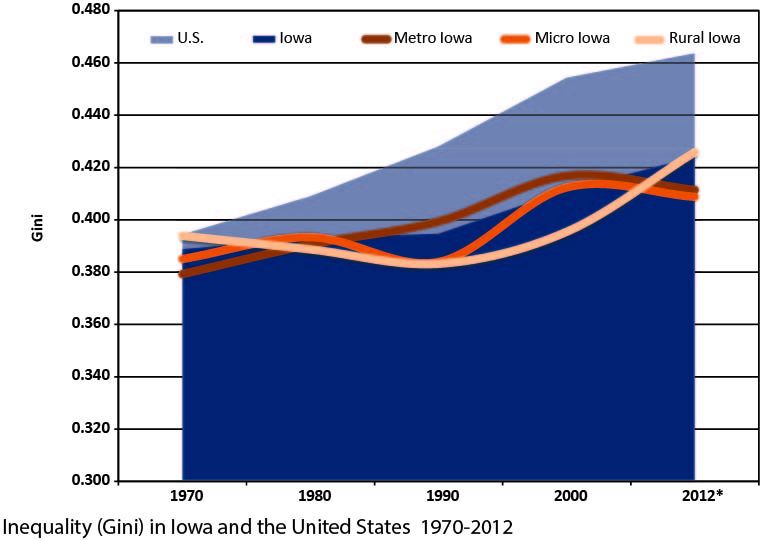Iowa income gap increases faster than national average
September 24, 2014
Job growth and wages in Iowa’s low-skill level sectors of the economy have not kept up with middle and high-skill level job wages.
The inequality has widened the gap between the richest and poorest Iowans, according to a study from David Peters, associate professor of sociology.
While Iowa continues to have less income inequality than the nation as a whole, the rate at which the gap is widening has surpassed the national average over the past 10 years.
According to the study, the rate of income inequality in Iowa has risen 9.1 percent over the last 40 years, while the national rate was 17.6 percent. Over the last 10 years, Iowa’s rate was 3.1 percent compared to 2.1 percent nationally.
Peters said rural counties, along with Story and Johnson counties, are the most likely to have high levels of income inequality.
Story and Johnson counties’ inequality rates are due to the high number of college students and professionals living in the areas. The lack of middle- and high-income jobs outside of the agriculture industry is part of the inequality rate increase in rural areas, Peters said.
“In the rural communities that have been driven by growth in farming, there is an absence of other good jobs,” Peters said. “Rural Iowa has lost those middle skill, middle wage jobs.”
Robert Reich, former secretary of labor in the Clinton Administration, said median incomes of low-skilled laborers have not increased for the past 30 years when adjusted for inflation.
Joydeep Bhattacharya, professor of economics, said a problem with high income inequality is the lack of social mobility – the ability to move from one social class to the other – it creates.
“The problem with [income] inequality is it perpetuates across generations,” Bhattacharya said.
Peters and Bhattacharya said side-effects of a large wealth gap are low-quality education and lack of government services.
“Children who grow up in poor school districts will have very different lives than wealthier children,” Bhattacharya said. “Only because their parents had very different lives.”
The report states that Iowa currently has the fourth highest social mobility rate in the country, meaning the income bracket a person is born into is less of a factor in determining the income bracket they end up in.
Peters said he believes that Iowa’s social mobility motivates people to work harder.
“Why would people work hard when they don’t see any payoff in economic gains?” Peters said. “When people believe they can work hard and move their way up, that reinforces the strong work ethic Iowans have.”
Government programs leading to quality education, health care and job opportunities are the key to keeping the income gap manageable, Bhattacharya said. That is not to say the government should try to make everyone equal.
“At least let everyone get out of the starting block at the same time,” Bhattacharya said. “Some will be better runners than others, but that’s not something the government should interfere in.”







